Ethiopia 2002
This was a university trip, to do with a agricultural project that was being done in Ethiopia together with the Ethiopian Debub Agricultural University in Awassa. Three of us students spent 5 weeks in Ethiopia, working and touring around with professors from universities in both countries, plus Ethiopians from other agricultural institutions.
I found Ethiopia a difficult country to generalize about. For example 'farangi' histeria is common in most places, and one gets quickly used to 'you, you' and the status (and weariness) that a movie star must face. In Addis there is the additional concern one has to get quickly streetwise as there is many scams and cons going on. On the other hand the people are generally extremely friendly and helpful, especially once a few greetings are learned. The assumption that everyone is out to get you I had in the beginning turned into the assumption that (almost) everyone is was out to help.
The countryside, far from being a flat desert, is mostly a high, cool plateau, resembling in places the moors of England or the foothills of the Alps, with the difference that everything is extensively farmed or grazed. This plateau has huge cuts resulting in giant valleys which get warmer as the elevation decreases. The largest such valley is part of the great African rift, and is where we spent most of our time. These valleys are prone to droughts on occasion, but true deserts are suprisingly rare.
Ethiopia constantly surprised me.
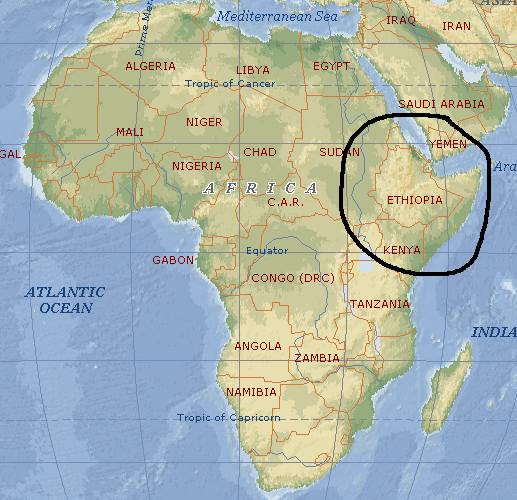
The location of Ethiopia, bordered by Kenya, Sudan, Eritrea, Djibouti,
and Somalia.
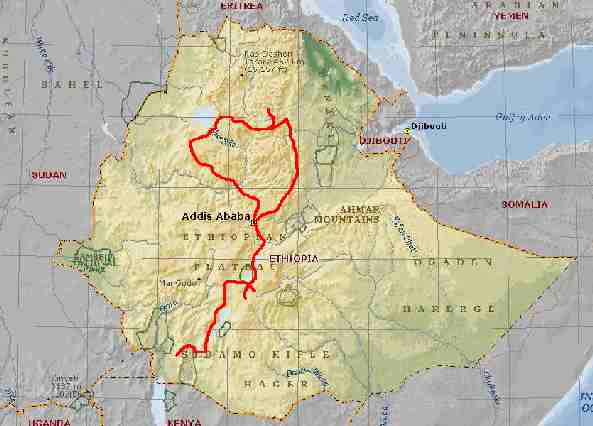
Where we went.
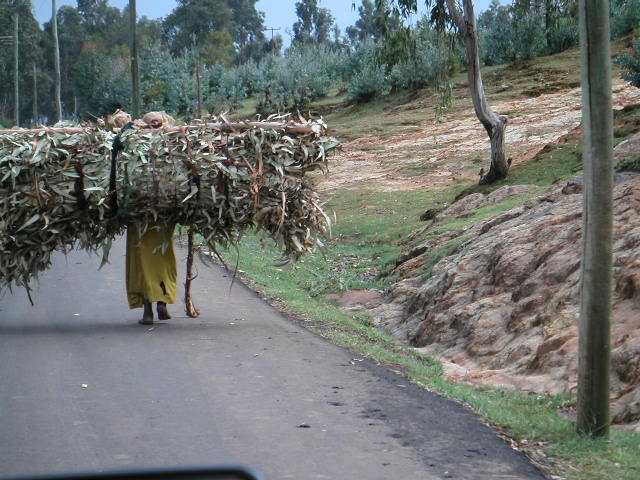
Women carrying wood from the hills to the capital, Addis Abada.
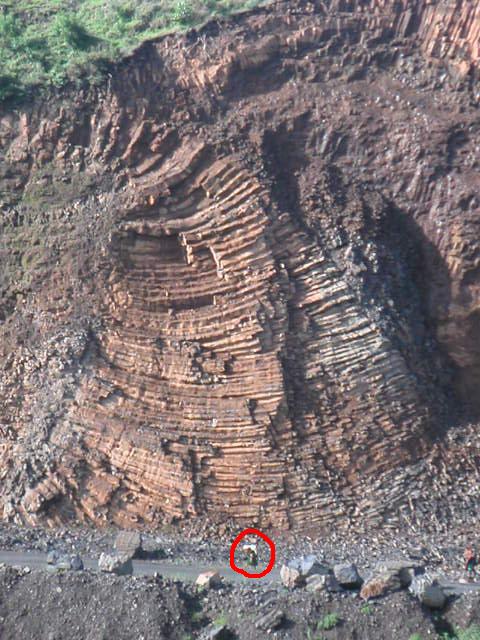
Basalt formation, Debre Markos. Circled is a person walking at the base of the cliff.
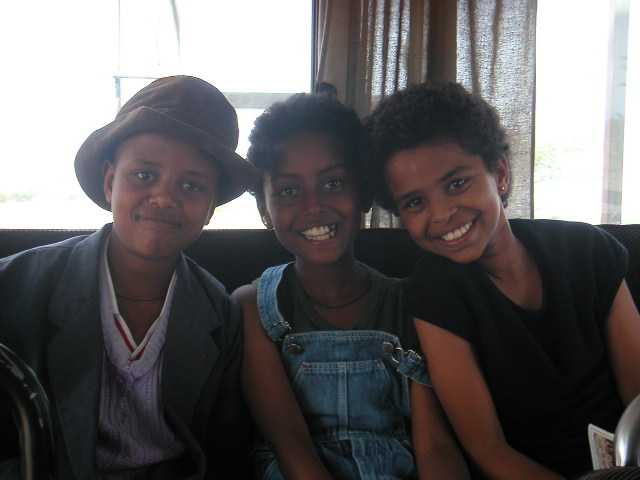
Children of officials of the Ag College we worked at.
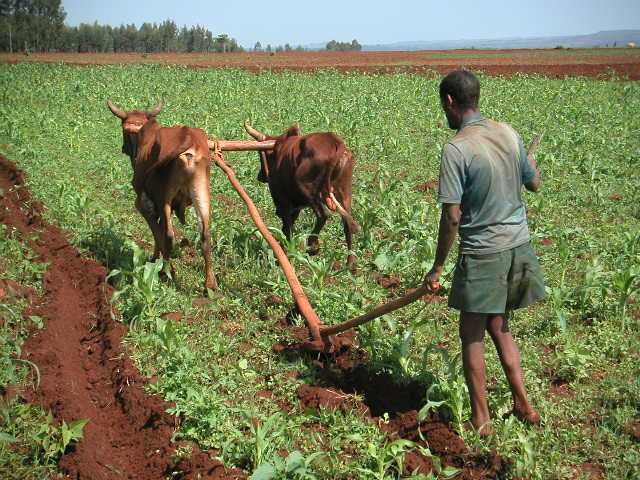
Typical farming methods, plowing between corn rows.
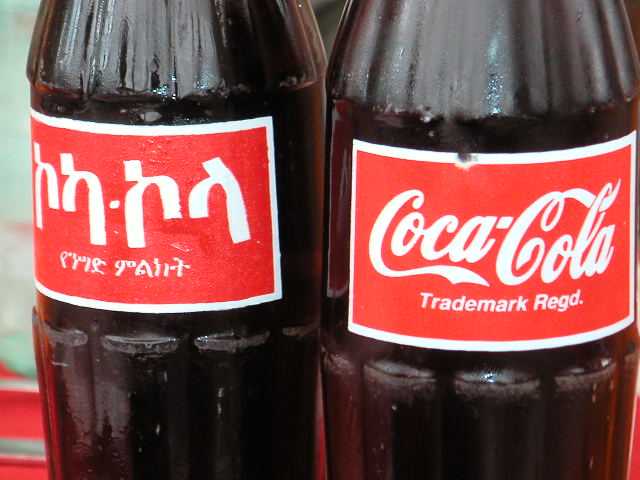
Coke in Amharic.
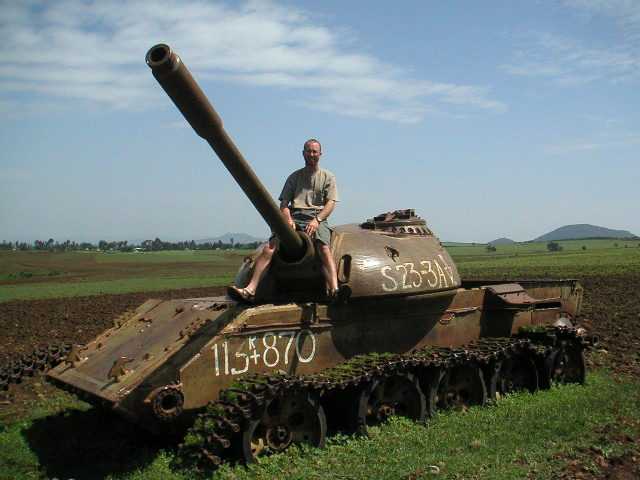
Remains of Soviet tank from the era of the Socialist regime known
as the 'Dergue' or committee, 10 years before.
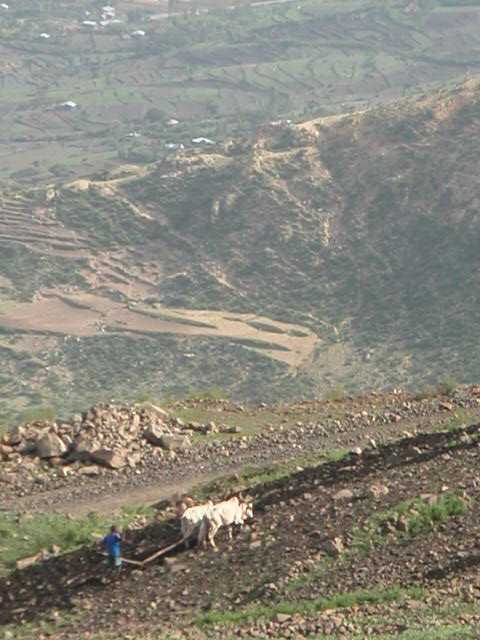
Farming at the edge of the Blue Nile gorge.
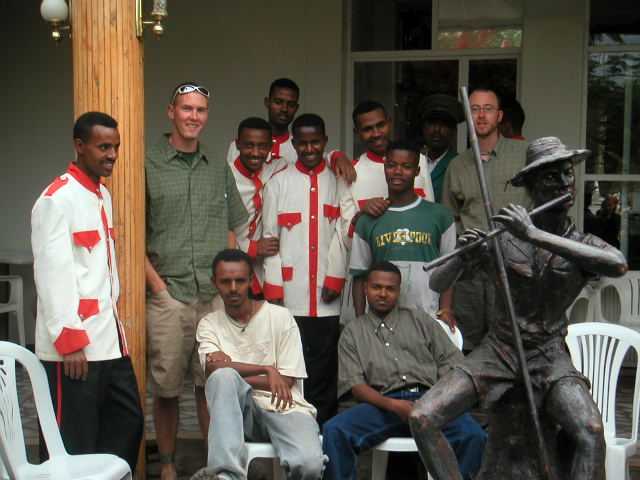
Nick and me with the staff at the Lewi hotel, Awassa.
Typical landscape by the Blue Nile falls, Bahir Dar. Note the smoke
oozing through the thatch of the roof of the hut. This is very important
as it keeps insects from eating the thatch, and the smoke gets into the
clothes and skin of the people, acting as a mosquito repellant. All our
souvenirs brought back smelt strongly of smoke.
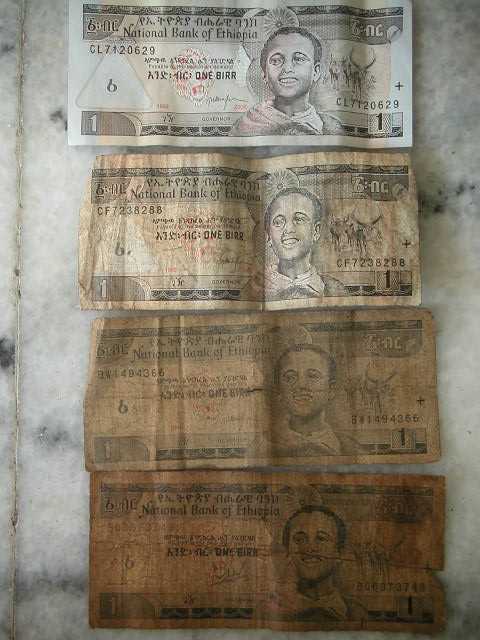
Various states of a one Birr note. Like India, the small money can
get pretty ragged and smelly.
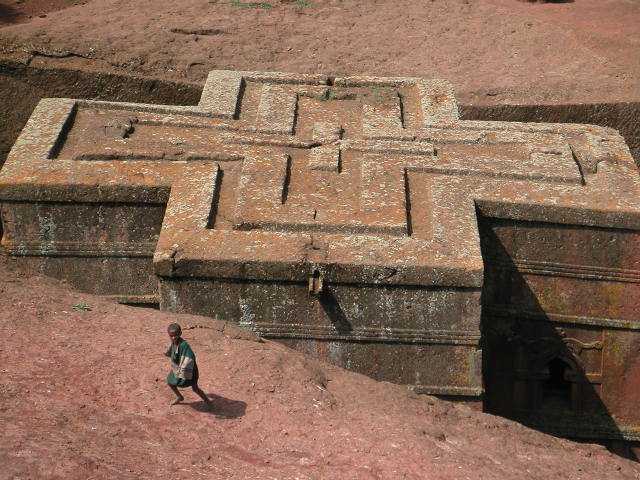
Top of rock-hewn church at Lalibella. Christianity is very old here,
becoming the state religion at the beginning of the 4th century.
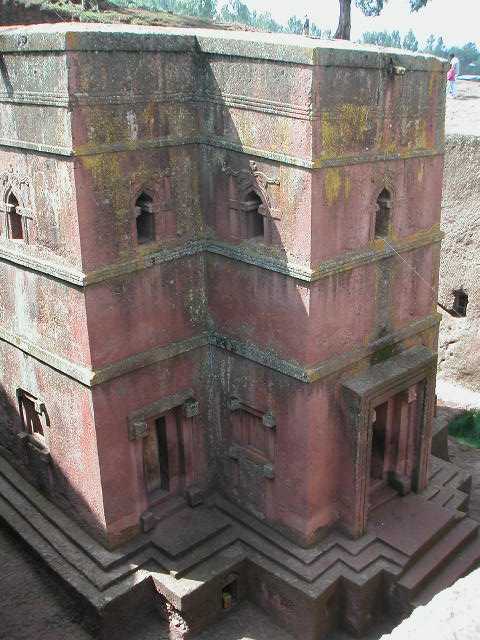
Side of same church, looking into the cut.
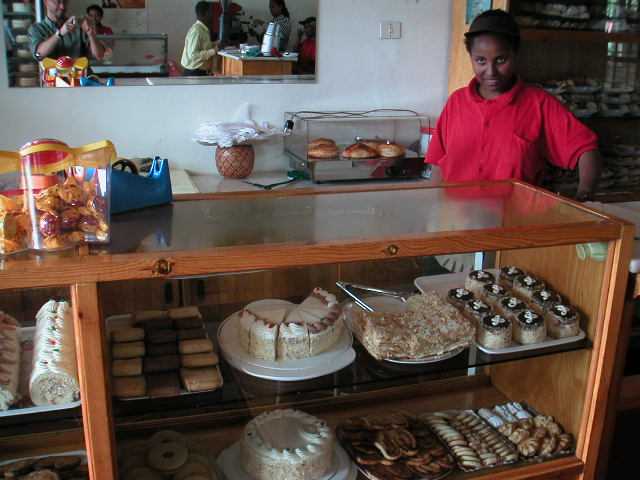
Pastry shops are everywhere.
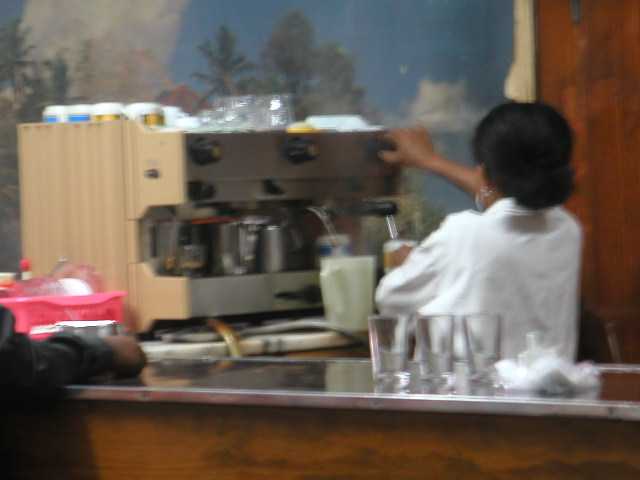
As are expresso machines (legacies of the Italian occupation)
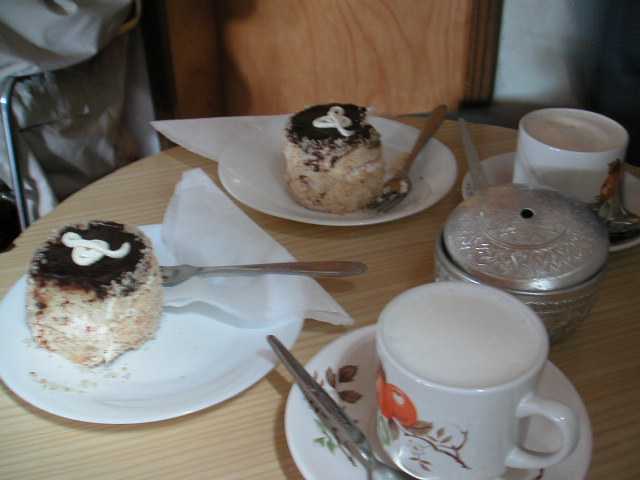
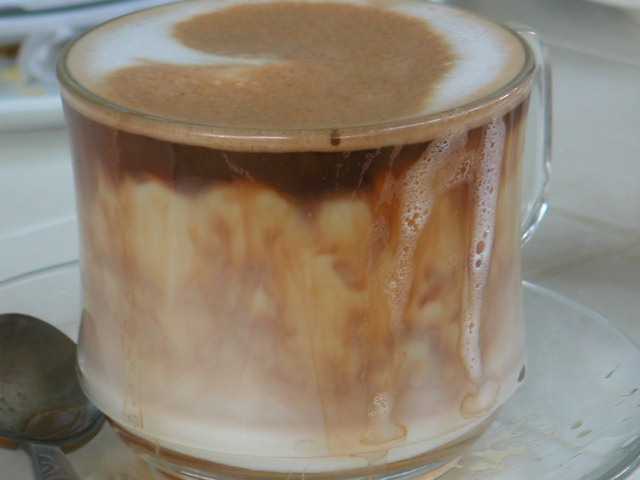

Therefore breakfasts of pastries and coffee are cheap and good. Shall
I have expresso, mercato, coffee with milk, hot milk, cappachino?
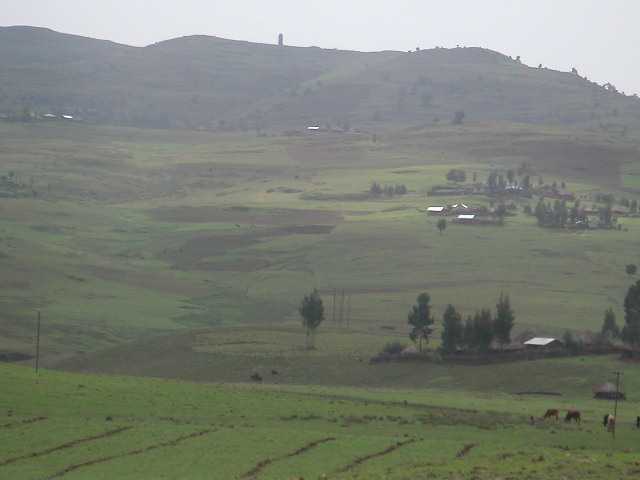
Most parts of Ethipia are temperate or even cool by our standards.
Altitude generally governs temperature in this part of the world, and the
highlands, where most people live, average over 2000m with 20 peaks of
4000m or higher. Misty, cool, stone walls, marshy, some areas look like
the moors of Great Britain.
Some areas were even flooding when we were there.
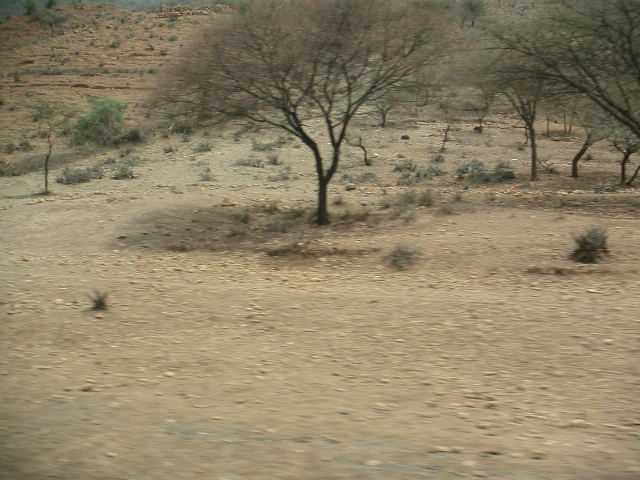
Some parts of the country ARE dry as a bone, mostly in the east,
in the direction of Somalia, where the great rift valley cuts the highlands
in half. The Danakil Depression, which dips to -116m has lakes of salt
3km deep and temperatures over 50 degrees.
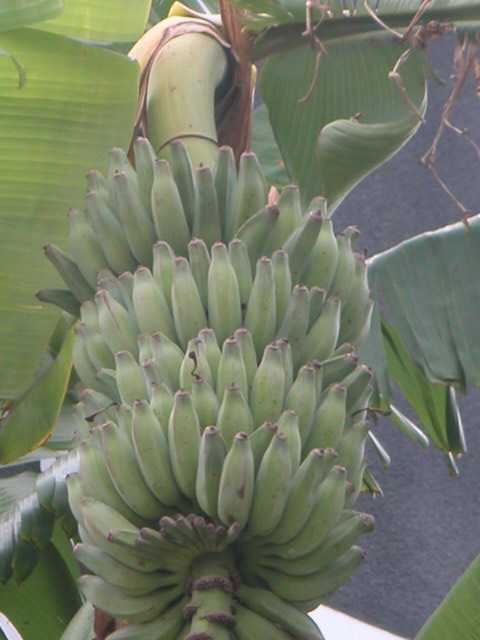
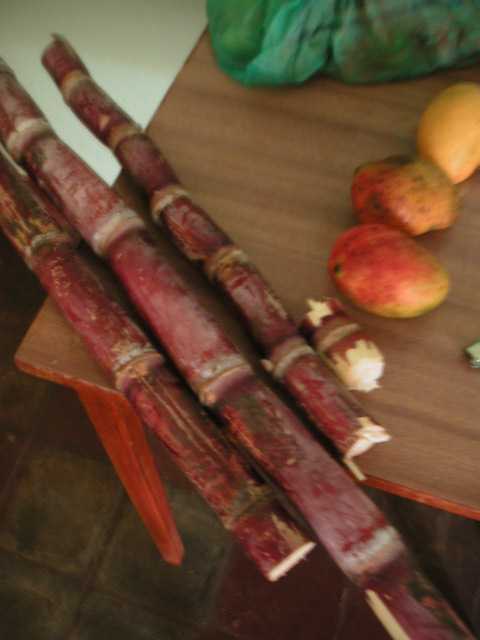
In the areas where temperature and moisture are high, all kinds of tropical crops are grown. We didn't have very good luck with the fruit we bought other than the bananas however, the rest seemed to be either green or, the next hour, overripe.
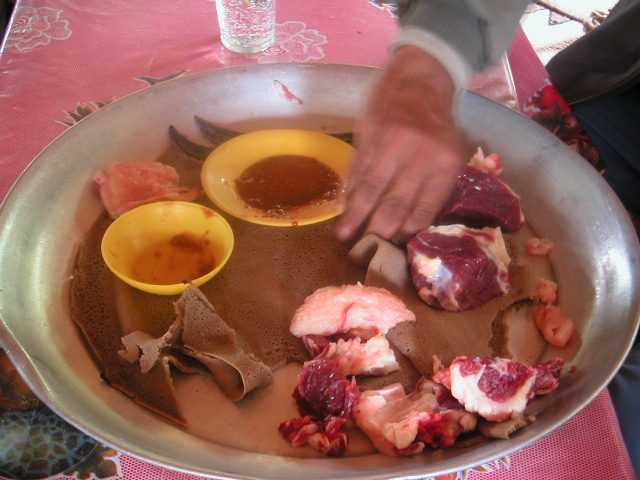
Livestock are another crop that is everywhere, and at times it seemed as if Ethiopians lived on a diet mostly of meat. The fondness for meat extends to eating it raw. We were warned by our professor not to even think of doing this, although the Ethiopians did not think it was a big deal. Just have the parasite medication handy.
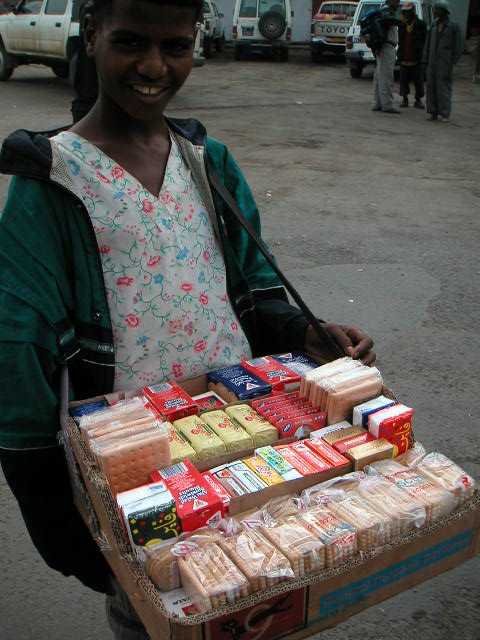
Getting away from the agriculture for a moment, handy vendors sell
cigarettes, cookies, gum, AND condoms, which are also thoughtfully provided
in most hotel rooms, which often seemed to double as brothels.
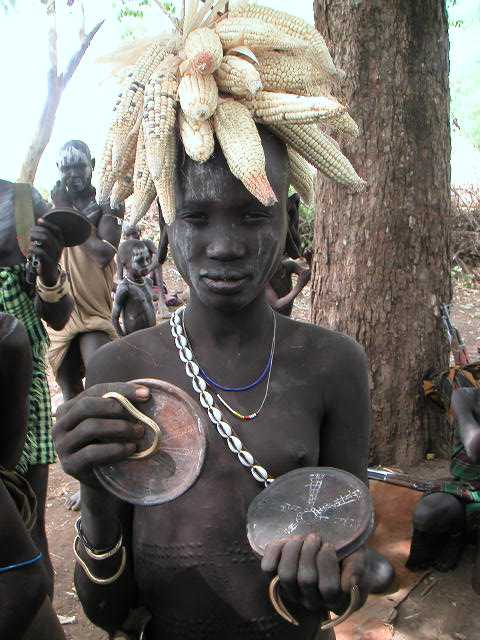
Tribal peoples from the remote south, Mursi girl holding lip plates.
While these people fill the Western concept of the 'African' from years
of reading National Geographic, most Ethiopians generally found our fascination
for this quite strange, and these people somewhat alarming.
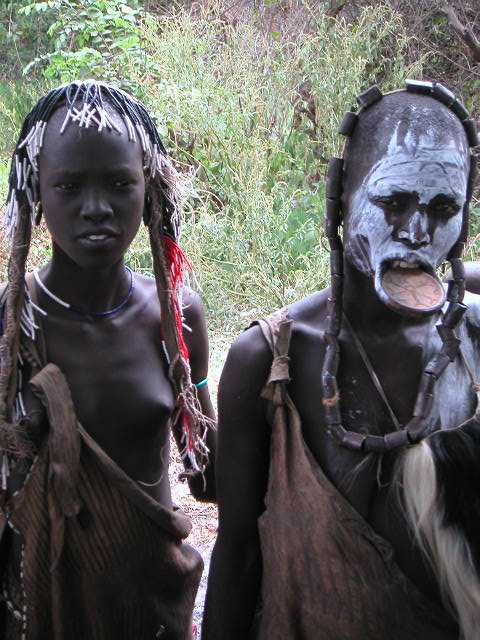
Mursi again. Pretty girls until it comes time to put the lip plate
in. Dealing with them was a bit of a nightmare, as the Mursi are skilled
at winding up tourists to get the most money out of them. No worry about
taking advantage of these people, more worry about them taking advantage
of us.
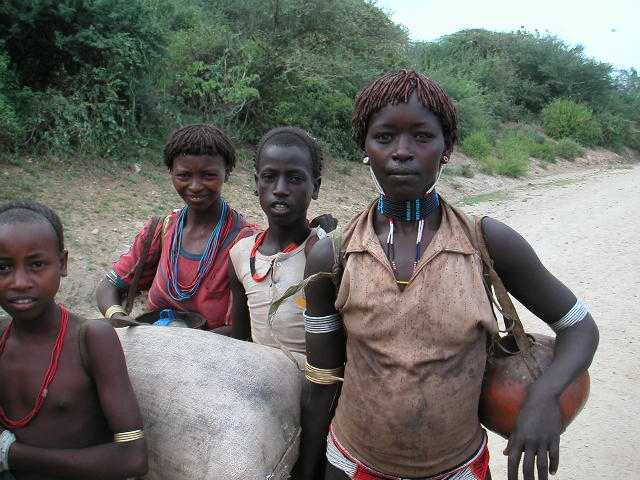
The Hamer, on the other hand, were very pleasant indeed. Unfortunately
when you take a photo they tend to turn into wood....not that they are
normally like this.
Recommendations
Study some Amharic before leaving, at least a few key words such as the greetings selaam or tadias, the magic word ishee (ok), aw and ay (yes and no), ale (there is) and yelem (there is not), numbers from one to ten, etc. Lonely Planet produces a good language guidebook to take along to learn more as you go. As well read over how to understand Ethiopian English and how to communicate in a country that does not use English as its first language. The Brandt ‘Travel Guide to Ethiopia’ and Rick Steve’s ‘Europe Through the Back Door’ have good sections.
Read over some general recommendations on how to cope in a third world country with culture shock, dealing with beggars and poverty, etc. The Brandt Ethiopia guide has excellent advice as well on this. ‘Europe through the Back Door’ and ‘The Peoples Guide to Mexico’ are also good. Especially important on arrival, as Addis is the most difficult to deal with in most ways initially.
A digital camera was very handy for being able to instantly check if a photo turned out, as well to show to the locals when taking their photos. If packing a digital camera, take along connector cables and software to download to a computer for safekeeping. It was also handy to keep some photos from home on the memory card, to show people there and as reminders of home. Ideally a laptop would be taken along as well, to store and organize photos and to write the report on the go. Computer access for us was somewhat limited. If taking a laptop, one with a combo CD burner/DVD drive would be useful to archive documents and photos on CD-R’s and to play some Simpson’s videos or what ever else would be comforting when a ‘Western culture fix’ is needed. While on the subject of gadgets, binoculars were very handy to get a better look at the varied wildlife, especially birds, which seemed to be different and interesting wherever you went.
Health wise try and eat non-greasy foods, learn the Amharic words for ‘dry’ or ‘no butter’ and pack along plenty of indigestion medication. The various types of coffee and pastries made a quick and cheap breakfast. Gel hand sanitizer was very useful, especially as so much of the food is eaten without utensils there. Powdered Gatorade makes a good rehydration solution. ‘Bugs, Bites, and Bowels’ by Dr Jane Wilson-Howarth is an excellent travel medical guide.
· If working in the Rift valley, an outfit of short-sleeved shirt, shorts and sandals would be good for most occasions, with lightweight shoes, trousers, and jackets to pack along for evenings and rainy days. Higher elevations may demand more warmth and waterproof clothing. All clothes should be new and presentable as the Ethiopians are quite well dressed generally.
For long road trips in jeeps and such something soft to sit on would
be useful, like a thermarest ‘sport seat’ or a pilfered airline pillow.
And don’t forget the Gravol.